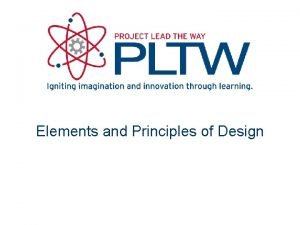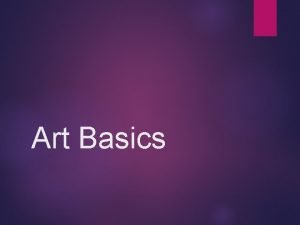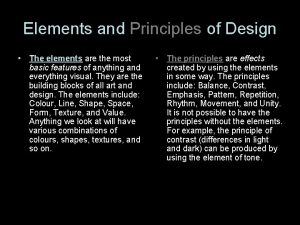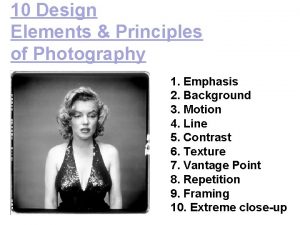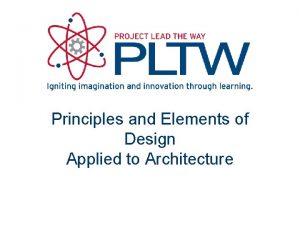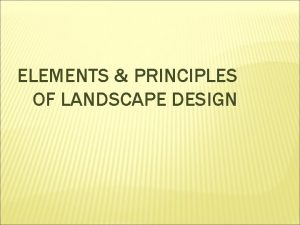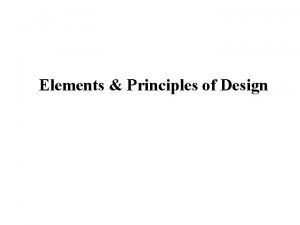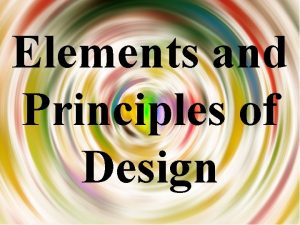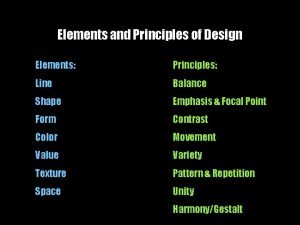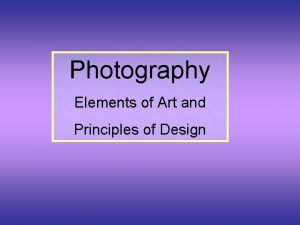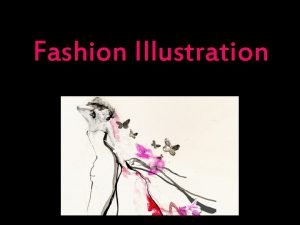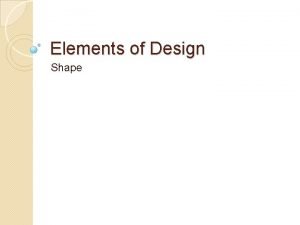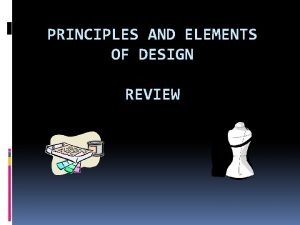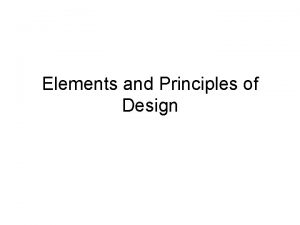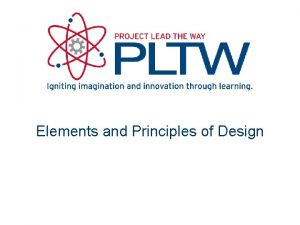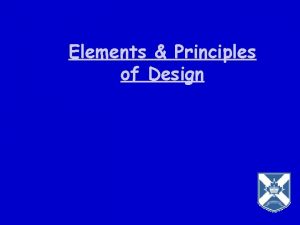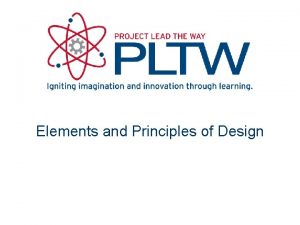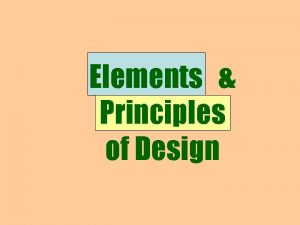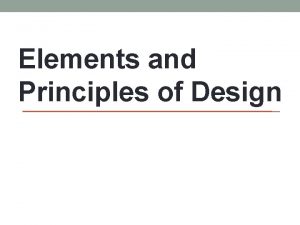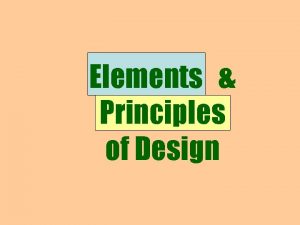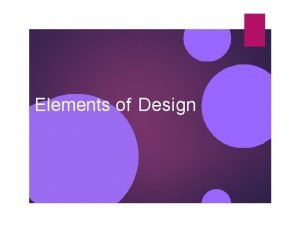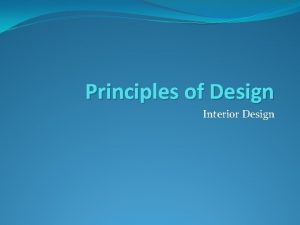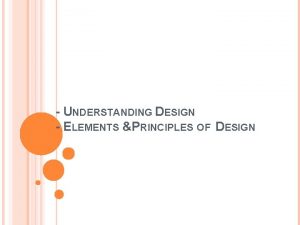Principles Elements of Design PT Instructronics Principles of



















- Slides: 19

Principles & Elements of Design PT Instructronics

Principles of Design n There are ten principles that encompass an interesting design. • Balance • Repetition • Rhythm • Opposition • Emphasis • Subordination • Proportion • Transition • Unity • Creativity PT Instructronics

Balance • • To bring into proportion, harmony. To make or be equal in weight or force. • • Formal: Informal: Balanced symmetrical not symmetrical, but balanced visually PT Instructronics Not Balanced

Rhythm • A flow or movement having a regularly repeated pattern of lines, planes, or surface treatments. PT Instructronics

Emphasis • Force of expression or special attention given to something LOOK PT Instructronics

Proportion • Golden Rectangle: The comparative relationship between things with respect to size. 5 x 8 4 x 7 3 x 5 PT Instructronics

Unity • Consistent use of line, color, and texture Oops PT Instructronics

Repetition • The act of repeating lines, spaces, textures, . . . PT Instructronics

Opposition • Long - Short • Thick - Thin • Black - White PT Instructronics

Subordination • Not all parts of the design have the same rank or value. Some are more important than others. The less important are subordinate, but they still are necessary for an effective design. Most Important Channel 2 Stormy Nite Meteorologist Subordinate PT Instructronics

Transition • Change from one aspect of the design to another. Color Shape PT Instructronics

Creativity • • Being imaginative or inventive, stimulating inventive powers. Making a mountain out of a mole hill. PT Instructronics

Elements of Design n Six integral components in the creation of a design: • Line • Light & Sound • Form • Space • Color • Materials & Texture PT Instructronics

Line • • Straight, curved, horizontal, vertical, diagonal. Produces a sense or movement. Curved: graceful flow Horizontal: increases length Vertical: increases height Diagonal: shows a transition PT Instructronics

Form • • The shape, outline, or configuration of anything. Some examples of specific forms are: Squares, rectangles, circles, ellipses, triangles, and ovals. PT Instructronics

Color • Provides definition, interest, variety, change • • • red: yellow: green: blue: violet: warm attention lessen tension cool, formal mystery PT Instructronics

Light and Shadow • By using various combinations of light & shadow you can create a sense of depth. PT Instructronics

Space • By incorporating the use of space in your design, you can enlarge or reduce the visual space. PT Instructronics

Materials: Texture & Color • By the use of various patterns combined with appropriate colors you can simulate various materials. PT Instructronics
 Which type of lines are used in the one-length hairstyle
Which type of lines are used in the one-length hairstyle Mass or general outline of a hairstyle
Mass or general outline of a hairstyle Elements of floral design
Elements of floral design Elements and principles of design chart
Elements and principles of design chart Interior design lecture notes+ppt
Interior design lecture notes+ppt Visual elements and principles of design matrix
Visual elements and principles of design matrix Elements and principles of design matrix examples
Elements and principles of design matrix examples Elements and principles of design fashion
Elements and principles of design fashion Elements and principles of design space
Elements and principles of design space Photos that show emphasis
Photos that show emphasis Gradated rhythm in architecture
Gradated rhythm in architecture Elements and principles of landscape design
Elements and principles of landscape design What are the elements and principles of design
What are the elements and principles of design What are the elements and principles of design
What are the elements and principles of design Visual elements and principles of design
Visual elements and principles of design Photography elements and principles
Photography elements and principles Elements and principles of design fashion
Elements and principles of design fashion Technical elements of a drama
Technical elements of a drama Elements and sub elements
Elements and sub elements Hydrosulfuric acid
Hydrosulfuric acid





